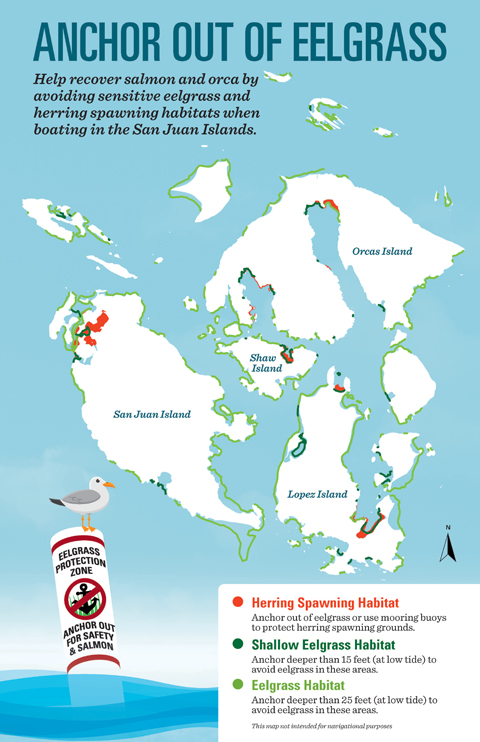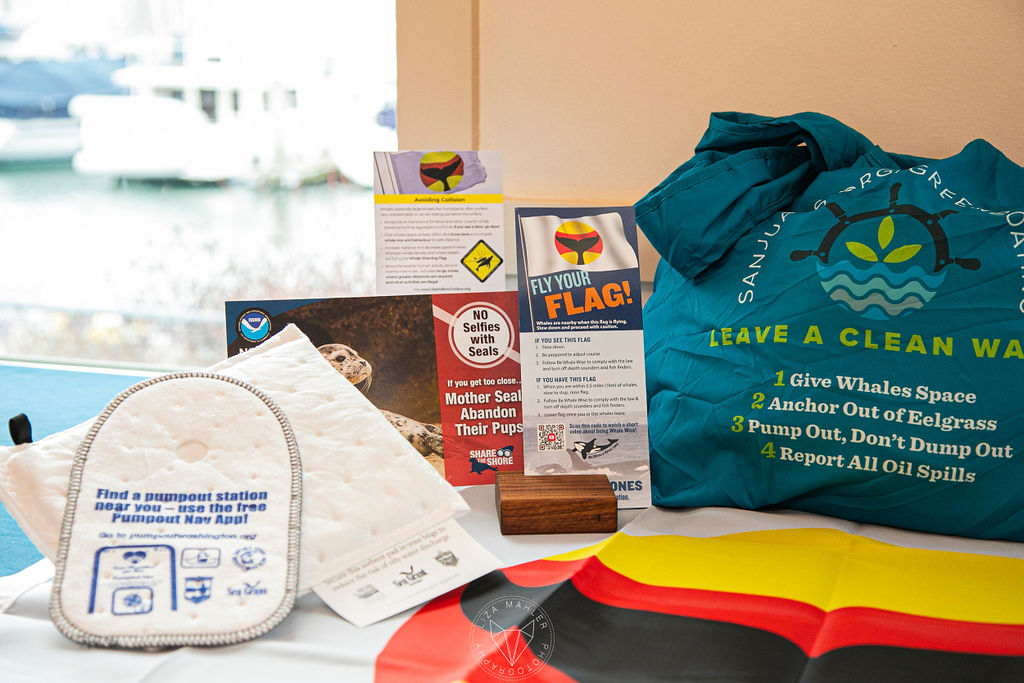
Boaters play a crucial role in safeguarding the diverse species that inhabit the Salish Sea. As you explore and enjoy the stunning waters and shores, minimizing your wake is important. Whether on a sailboat or powerboat, continue reading to discover how you can lessen your impact on the wildlife and communities that rely on these waters for sustenance and shelter.
Our Green Boater Kits are available to anyone who takes the Green Boater Pledge!
Protect this place. Take the Pledge.
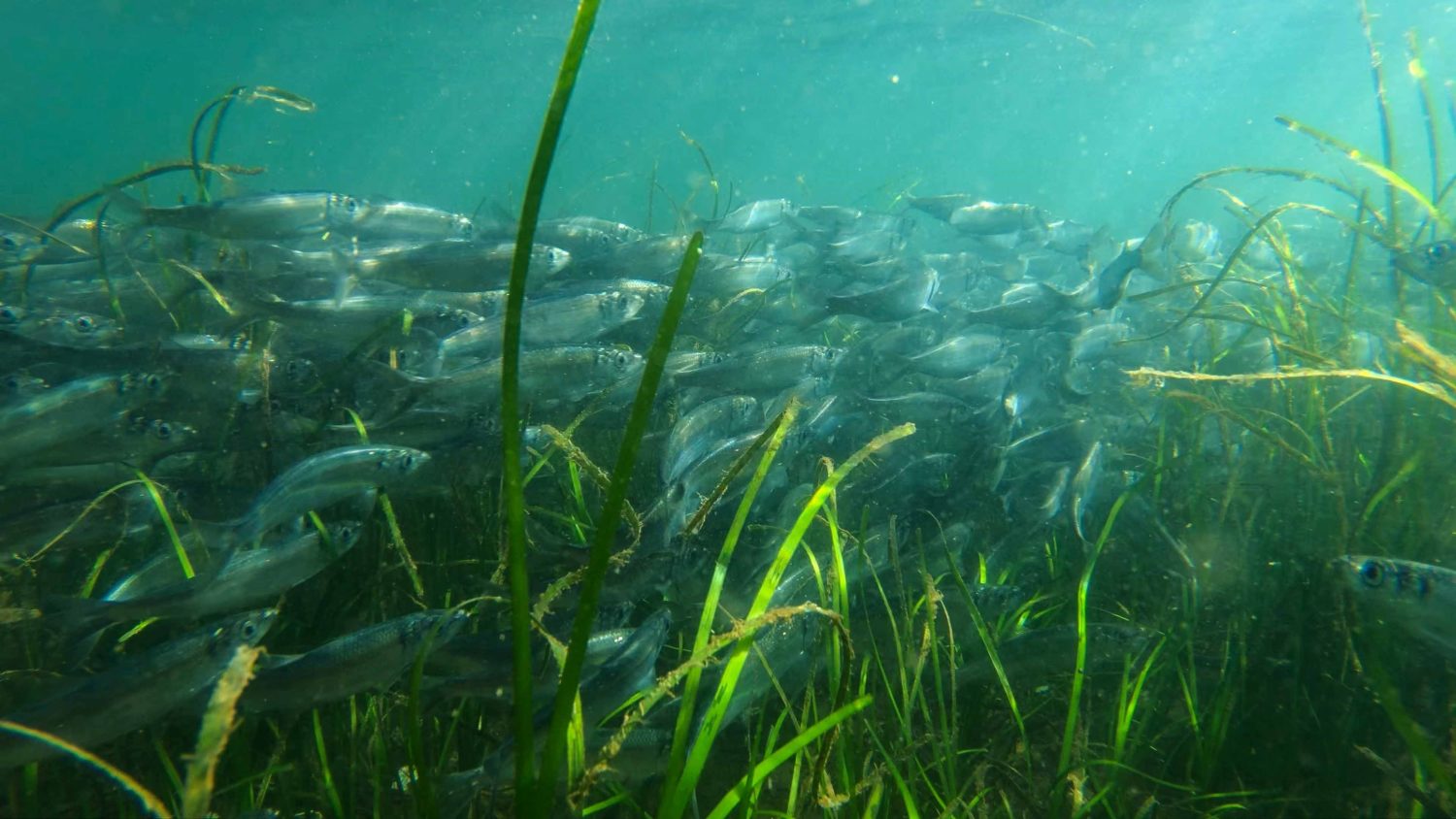
Anchor out of Eelgrass!
Image courtesy Florian Graner
When in doubt, anchor out! Anchor in waters deeper than 25 feet to save important eelgrass for salmon, crab, and other wildlife. While the impacts of each anchoring event may be small, the combined effects are significant. It only takes a few minutes to learn about what eelgrass looks like and where it typically grows.
Download Friends of the San Juans’ free eelgrass depth map to help guide where you anchor while cruising in the San Juans. Keep a copy on your boat for when you are offline! Printed and laminated versions are also available by emailing [email protected].
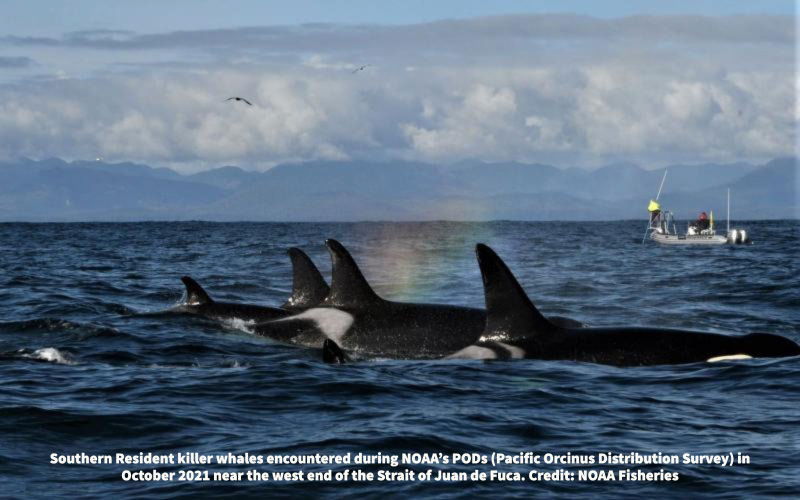
Give Them Space and Be Whale Wise!
Give Southern Resident killer whales the space they need to forage, feed, rest, and rear their young!
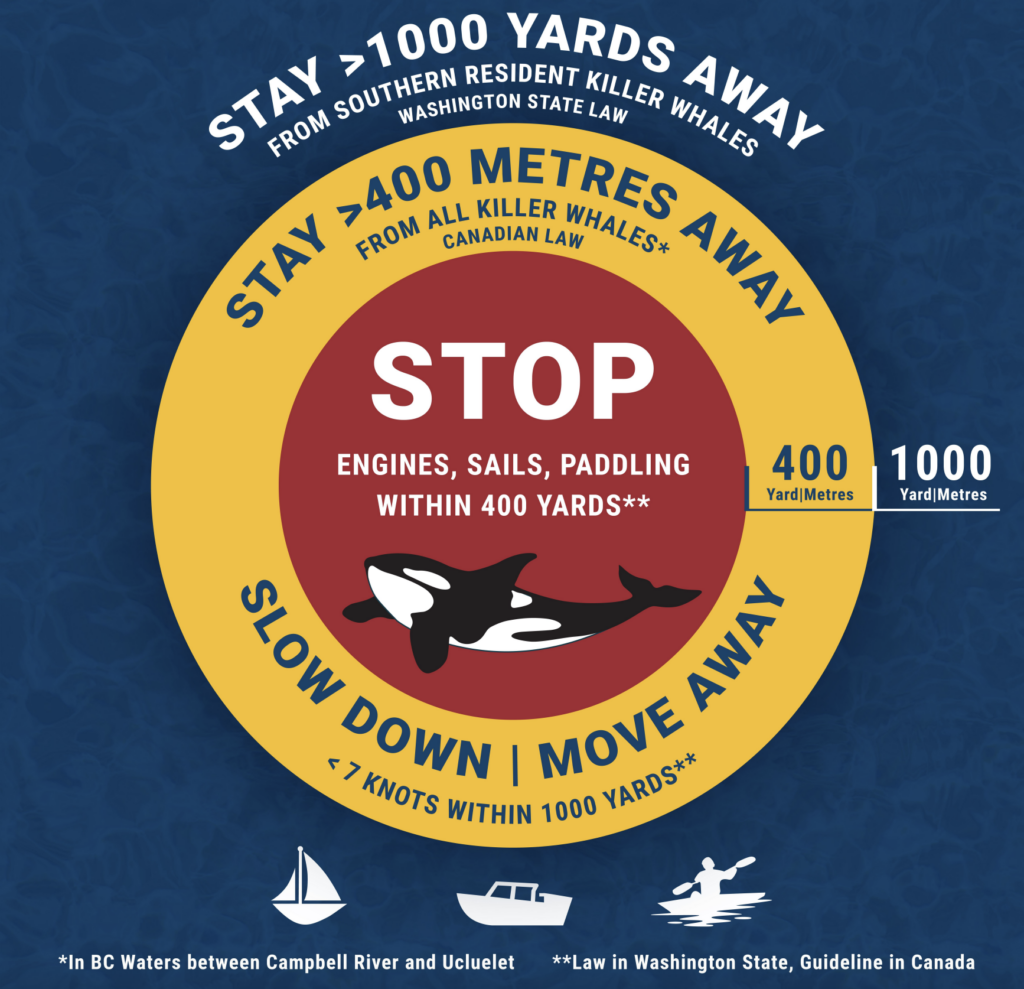
The critically endangered Southern Residents are impacted by vessel noise and presence. Current regulations require boaters in Washington waters to stay 1,000 yards away from Southern Resident killer whales at all times. 1,000 yards is approximately one-half nautical mile. Boaters who think they may be closer than 1,000 yards (but not within 400 yards) should attempt to navigate out of the path and away from Southern Residents at a speed of 7 knots or less. If Southern Residents approach within 400 yards of a boat, disengage the transmission, luff sails, or stop paddling (if it is safe to do) until the animal moves away.
Visit BeWhaleWise.org for more info about current regulations. Learn about the Voluntary No-Go Zone for Southern Resident killer whales on the West Side of San Juan Island.
Help other people know whales are near. Watch for whale warning flags hoisted on other vessels so you can slow down or bring your boat to a stop in the presence of vulnerable marine mammals. You can get your own whale warning flag by picking up a free Green Boater Kit at our Friday Harbor office! Email us at [email protected].
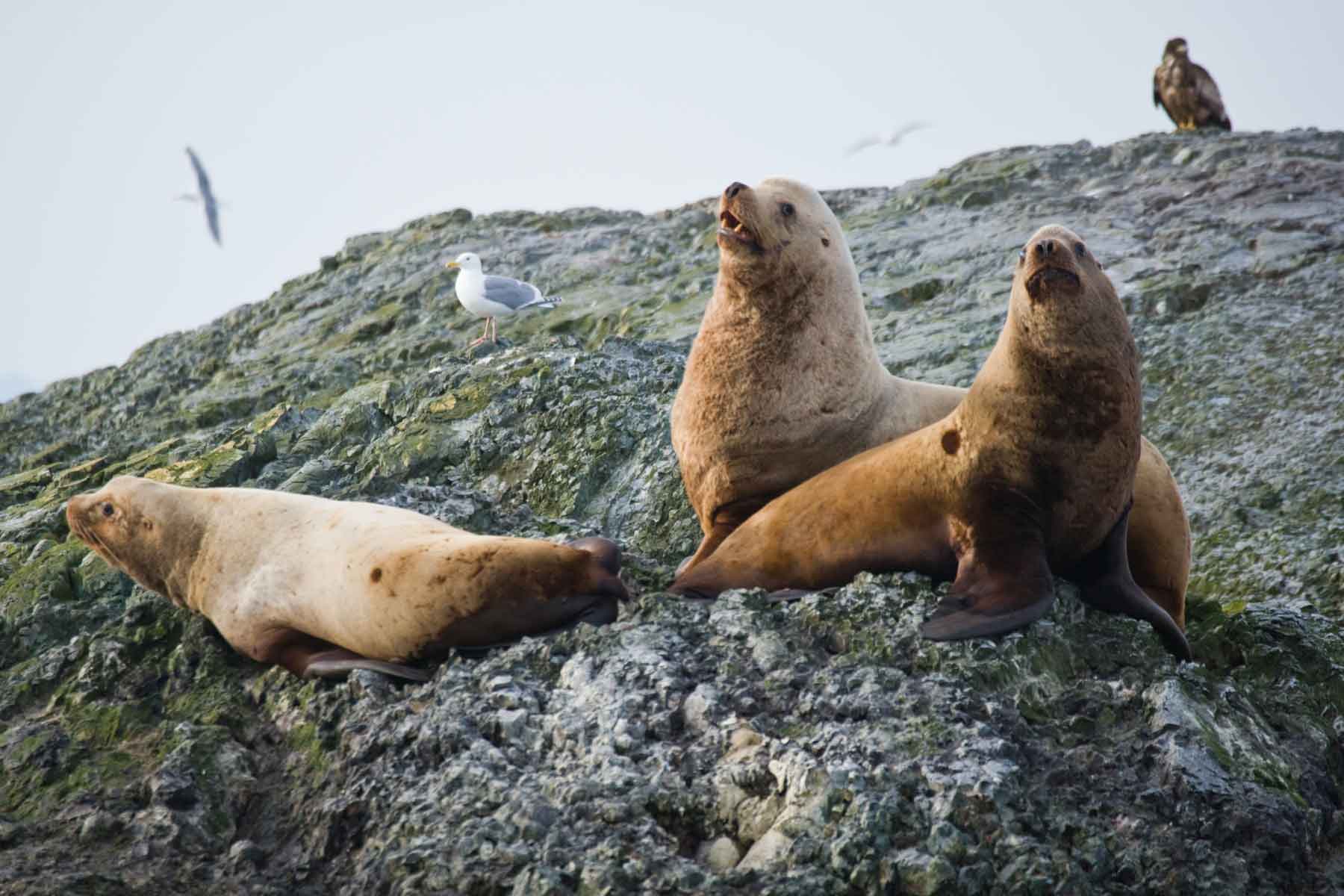
Help keep marine animals safe.
Use the following resources to report any stranded, hurt, entangled, or endangered marine mammals. This includes sea lions, seals, whales, porpoises, and otters.
- (800) 562-8832 marine mammal stranding network.
- (800) 853-1964 harassments and other violations.
- For entangled marine mammals, please call (877) 767-9425 or hail the U.S. Coast Guard on VHF Channel 16.
- WhaleReport Alert System – an alert system that broadcasts pertinent details of whale presence to large commercial vessels.

Keep it Clean and Green!
Do your part to keep marine waters clean by using pump outs, ensuring your boat is in good working order, and quickly cleaning even small oil spills.
- Report Spills—It’s the law. In the event of an oil spill call 1-800-OILS-911. Even small spills need to be reported.
- Small Spills Aren’t Slick. Get free small spills prevention materials from SeaGrant, which includes free absorbent fuel pads, videos, tips, and more! Contrary to popular belief, Dawn Liquid Soap is not effective for small oil spills. Dawn sinks the oil to the sea floor where wildlife ingest it, and it can do more harm. Instead, place an absorbent pad over the top of the spill to soak up as much as possible—just make sure it can be retrieved!
- Pump out, don’t dump out. Download the free Pumpout Nav App to find your nearest pumpout location and keep our waters clean. Visit pumpoutwashington.org for more info.
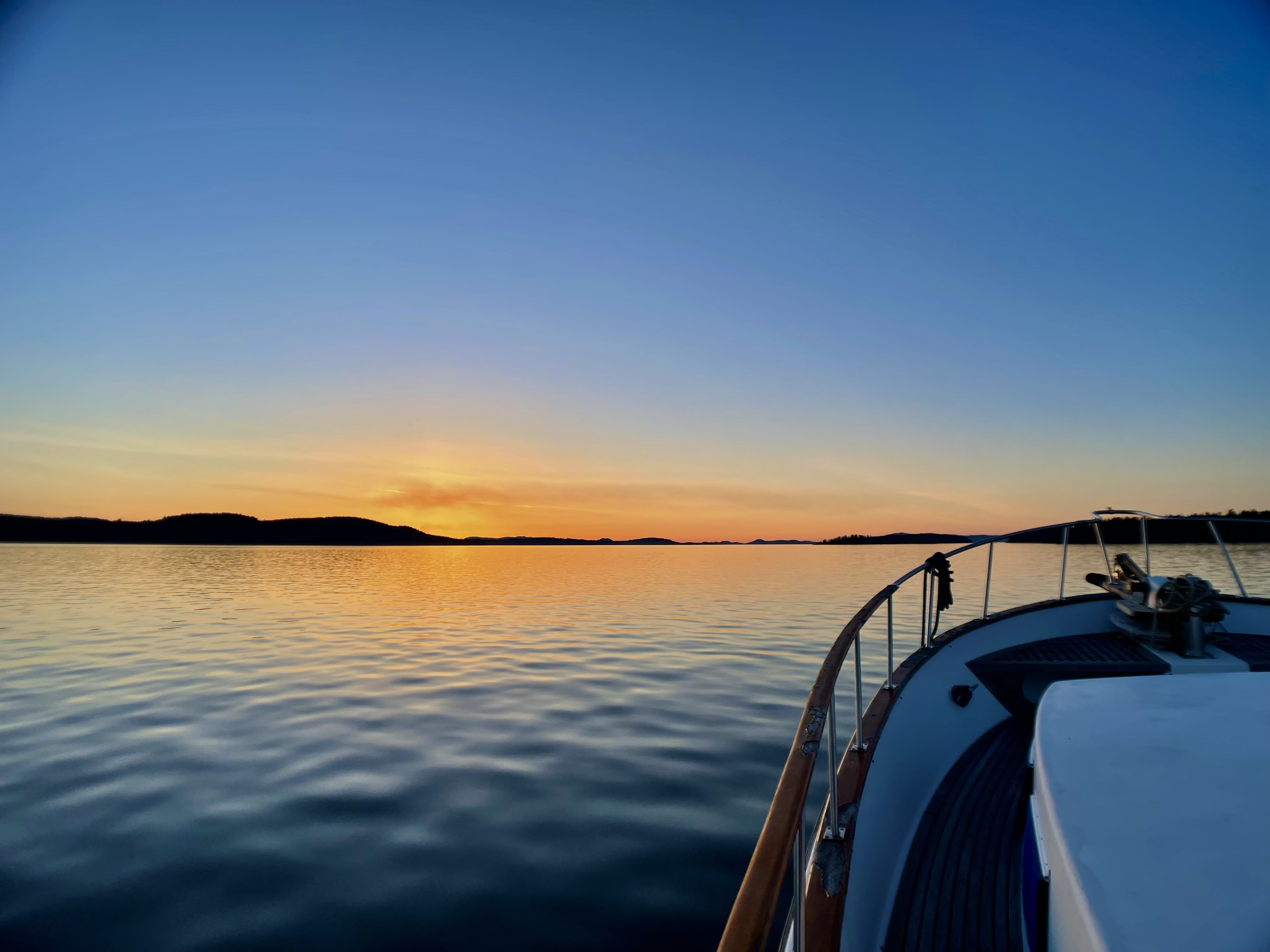
Protect this place. Take the Pledge!
Take the Green Boater Pledge and receive your official Green Boater kit.
Image courtesy Salish Seacrets Adventures
Ready to take it to the next level, matey?
Become a Green Boater Ambassador by committing to any of the following actions, and we’ll send you some cool gear!
- Email [email protected] to volunteer your time in the following ways:
- Distribute green boater resources or hang posters at marinas.
- Attend a community science or beach clean-up event.
- Invite us to your yacht/boater club or event to give a presentation about green boating.
- Sport your Green Boater Ambassador gear while on the docks and out boating, and commit to sharing the following 4 tips with other boaters:
- Give whales space and be whale wise.
- Anchor out of eelgrass.
- Pump out, don’t dump out.
- Report all oil spills.

For Shoreline Property Owners
Image courtesy Salish Seacrets Adventures
Shoreline property owners can set green boaters up for success in the following ways:
- Evaluate, upgrade or relocate outdated mooring buoys to reduce impacts to eelgrass. Learn more about funding support to upgrade buoys located in herring and eelgrass areas.
- Protect privately owned tideland habitats with voluntary conservation easements.
- Remove unnatural marine/beach debris from eelgrass and beach habitats such as derelict docks, floats, creosote-soaked pilings, etc. Funding and technical support is available to help interested waterfront property owners assess their shoreline restoration options. Email [email protected] for more information.
Thank you to the Bonneville Environmental Foundation, National Fish and Wildlife Foundation, the Wheeler Foundation, WA State Salmon Recovery Funding Board, the U.S. Fish and Wildlife Service, and Friends of the San Juans members for their support of eelgrass protection and restoration.
